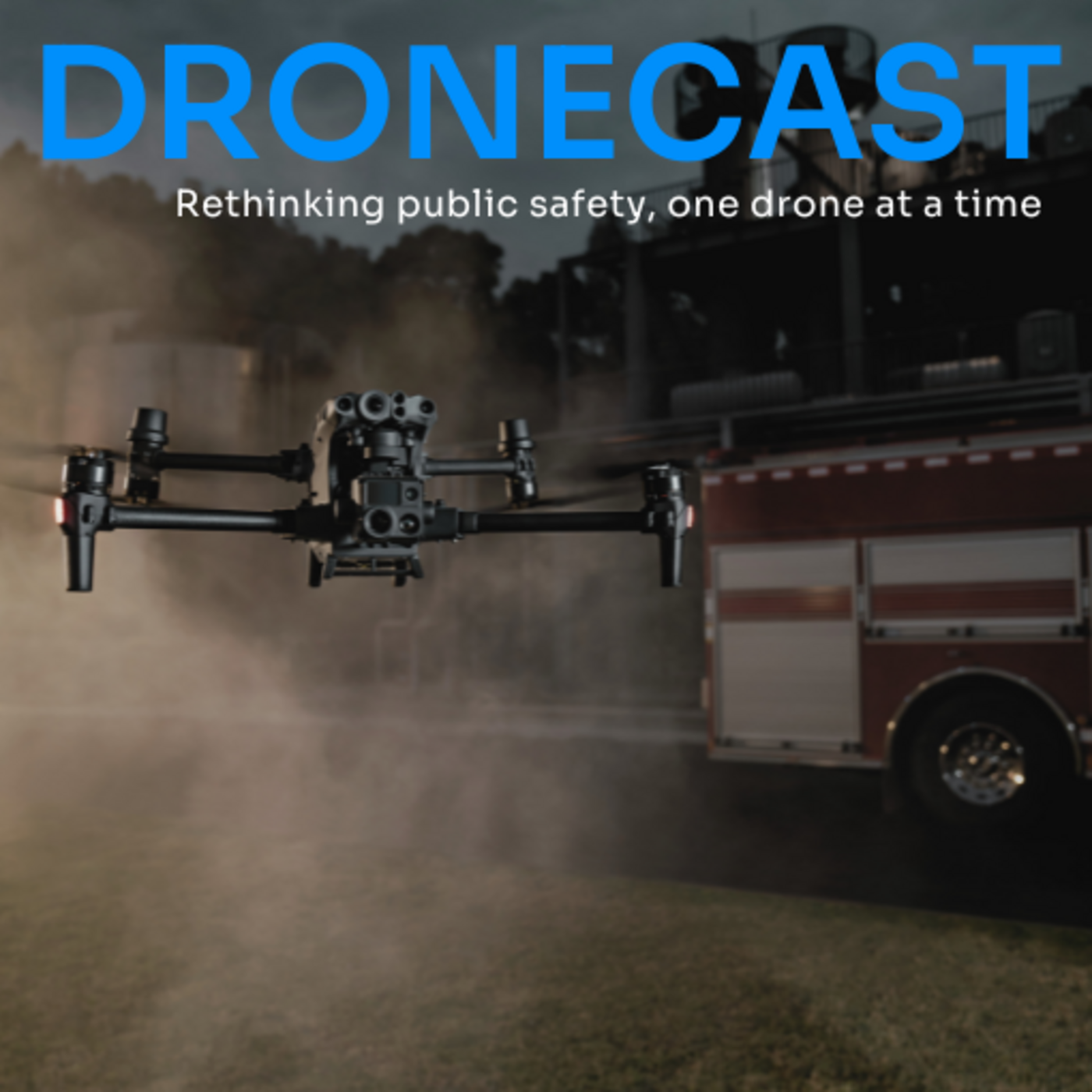Why Your Drone Program is Doomed to Fail (And How to Save It) with David Spraggs
September 30, 2025

In Part 2 of this DroneCast conversation, Joe Kearns continues his discussion with David Spraggs, former bomb squad commander and current Manager of Customer Success at DroneSense. Building on Part 1, David dives deeper into practical strategies for launching and scaling public safety drone programs—covering communication, interagency collaboration, and the future of Drone as First Responder (DFR) initiatives. This episode offers a roadmap for agencies seeking to move beyond adoption into sustainable, mission-driven growth.
In Part 2 of this special DroneCast series, Joe Kearns continues the conversation with David Spraggs, Manager of Customer Success at DroneSense and veteran public safety leader. With more than 26 years at the Boulder Police Department including service as a bomb squad commander and pioneer of one of the nation’s early police drone programs—David brings both tactical expertise and technical insight into how drones can reshape public safety operations. Today, in his role at DroneSense, he leads a team of customer success managers and learning development specialists, all with public safety backgrounds, helping agencies nationwide implement sustainable drone programs.
This episode builds on David’s Part 1 story of early adoption and community trust, shifting focus toward advanced strategies and lessons for long-term program success. He explains why clear communication between frontline officers and drone operators is essential, how structured training schedules sustain readiness, and why leveraging existing resources like LEDA and Drone Responders accelerates adoption. David also discusses the leadership skills often overlooked in technology programs—such as emotional intelligence, transparency, and authentic collaboration—that determine whether a program thrives or stalls.
Looking forward, David unpacks the realities of Beyond Visual Line of Sight (BVLOS) operations, the growing role of Drone as First Responder (DFR) programs, and the importance of setting realistic expectations around technology capabilities. With his blend of law enforcement experience, forensic science background, and current leadership role at DroneSense, David provides a candid, actionable perspective for agencies at every stage of their UAS journey.
What You’ll Learn:
- How to build effective communication channels between frontline officers and drone teams
- Why established training schedules are crucial for successful drone program implementation
- The framework for launching a drone program without “reinventing the wheel”
- How to leverage existing public safety resources like LEDA and Drone Responders
- Why emotional intelligence and clear communication are essential for program leadership
- How to navigate the rapidly evolving landscape of Beyond Visual Line of Sight (BVLOS) operations
- The importance of setting realistic expectations about drone capabilities in public safety
- How to build trust between agencies through authentic, experience-based relationships
- Why community collaboration is crucial for advancing public safety drone operations
- The key factors driving drone program adoption and technological advancement in 2024
Helpful Links:
- Fill out the Audience Form here.
- Explore more episodes and insights on the official DroneCast website: https://www.dronesense.com/dronecast
- Ready to launch or enhance your drone program? Get Started with DroneSense today!
- Parrot, ANAFI UKR Tech Sheet: https://5n8jp.share.hsforms.com/2oWfNvmGLRCeKUWcJGtFbBg
Episode Highlights:
- [07:03] Building Effective Communication Between Teams - David Spraggs emphasizes that communication is fundamental to bridging the gap between frontline officers and drone teams. Program managers must ensure all team members understand both the capabilities and limitations of drone technology, particularly the 25-30 minute flight time constraints. Clear communication helps set realistic expectations and prevents misunderstandings during critical operations. Regular debriefings and "hot washes" after missions help identify gaps and improve coordination between field teams and UAS operators. Regular training days, matching other specialized units' schedules, are essential for maintaining operational readiness and team cohesion.
- [10:31] Strategic Training Implementation for New Drone Programs - When mentoring new drone programs, Kearns focuses on establishing structured training schedules similar to other specialized units. Many agencies overlook dedicated training time while focusing on hardware and mission planning. Program managers should advocate for regular training days, comparable to SWAT or Bomb Squad schedules of 2-4 days per month. This systematic approach helps build muscle memory with equipment and procedures, essential for high-pressure situations. Consistent training ensures teams can operate effectively during real-world missions while maintaining safety standards.
- [17:11] Leveraging Existing Resources and Community Knowledge - Spraggs strongly advises against "reinventing the wheel" when starting new drone programs. The public safety drone community openly shares resources, from program documents to operational expertise. Agencies should actively network through conferences, training events, and professional organizations like LEDA. Successful programs regularly collaborate across state lines, with agencies helping each other develop effective UAS operations. The community's "help first" mentality creates a supportive environment for program development and implementation.
- [18:20] The Future of Drone First Response (DFR)- The landscape of DFR is rapidly evolving with accelerated FAA waiver processes and expanding operational possibilities. Agencies can now obtain BVLOS waivers within weeks instead of months, particularly for sub-200 foot operations with basic ADS-B equipment. Safety remains paramount while flexibility and speed of deployment increase. Significant hardware advances are expected in the next 12-24 months, introducing new operational capabilities. These developments will dramatically expand the scope and effectiveness of public safety drone operations.
Dronecast: Rethinking Public Safety, One Drone at a Time Podcast is handcrafted by our friends over at: fame.so
Previous Guests include: Matt Rowland, Jason Burnside
Check out our 3 most downloaded episodes:
Previous Guests include: Matt Rowland, Jason Burnside
Check out our 3 most downloaded episodes: